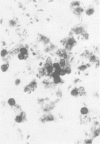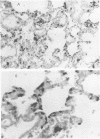Abstract
Pneumocystis carinii pneumonia was produced in eight different strains of mice by the administration of corticosteroids, low (8%)-protein diet, and tetracycline in the drinking water. Heavier degrees of P. carinii infection were most consistently found in C3H/HeN mice; intermediate levels occurred in BALB/c AnN, C57BL/6N, B10.A(2R), AKR/J, and Swiss Webster mice; lighter degrees were found in DBA/2N and DBA/IJ mice. Histopathologically, P. carinii organisms were morphologically indistinguishable from human and rat P. carinii, and elicited a predominantly mononuclear response that was similar among the various mouse strains. The optimal cortisone acetate regimen was 1 mg injected subcutaneously twice weekly. Higher doses shortened the life span of the mice, presumably by inducing overwhelming bacterial infection. This problem occurred not only in different strains of mice, but also in the same strain of mice obtained from different breeders. Thus, cortisonized mice should be useful in the study of experimental P. carinii infection. Success of this model depends on the corticosteroid dose, as well as the strain, source, general health, and preexisting microbial flora of the mice chosen for study.
Full text
PDF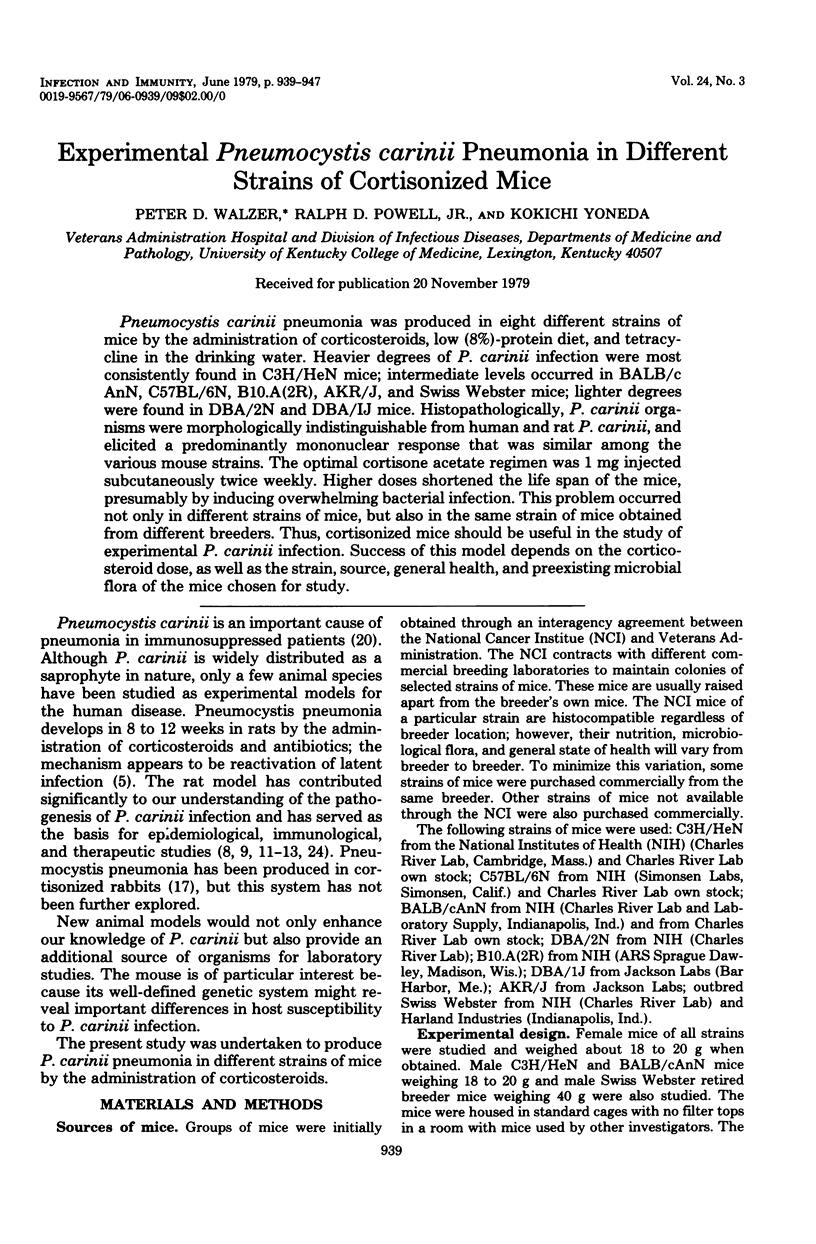
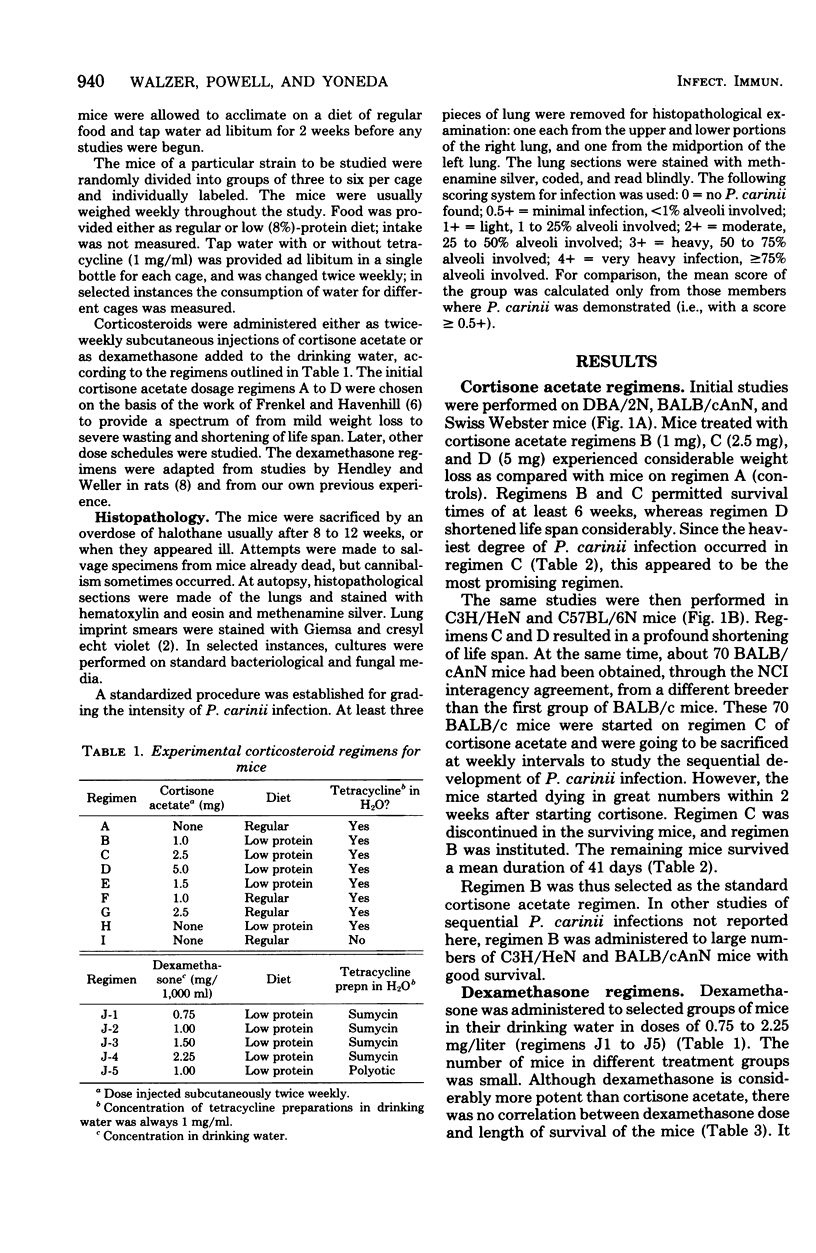
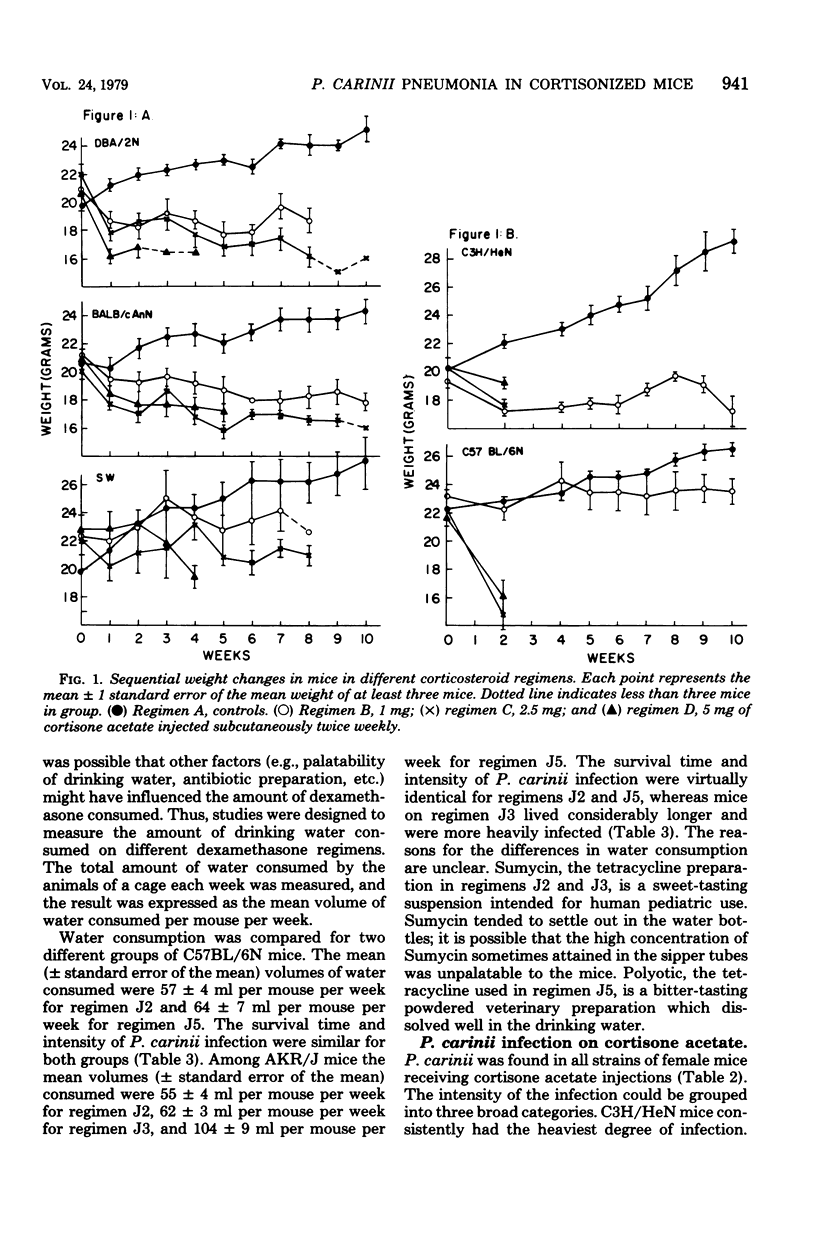
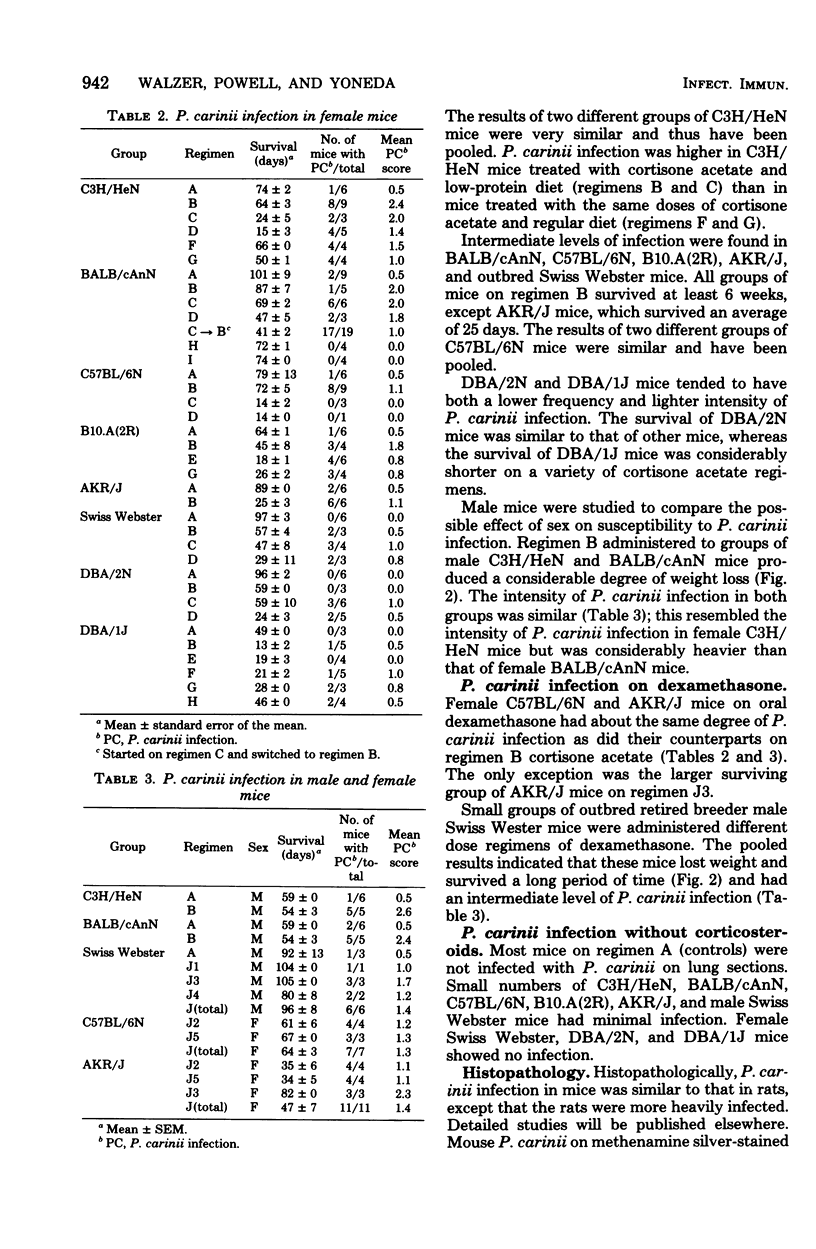

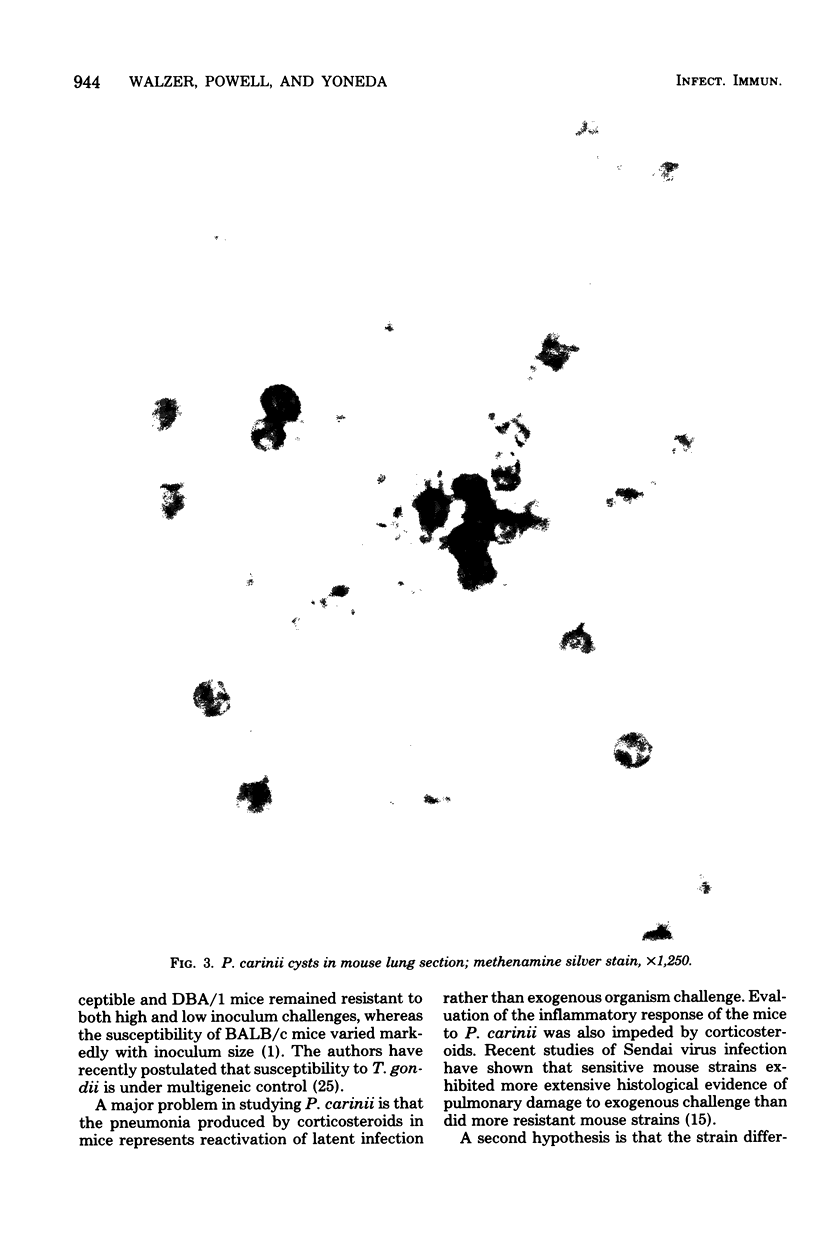
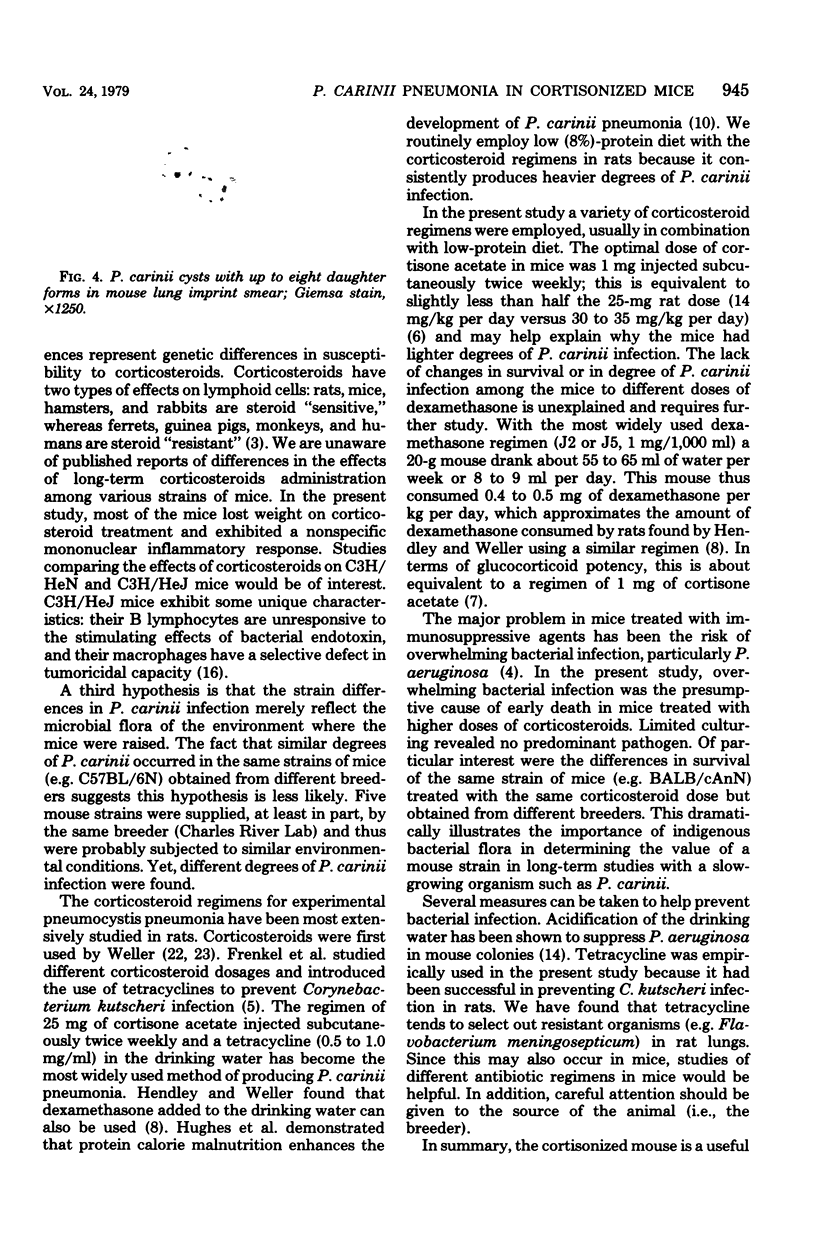
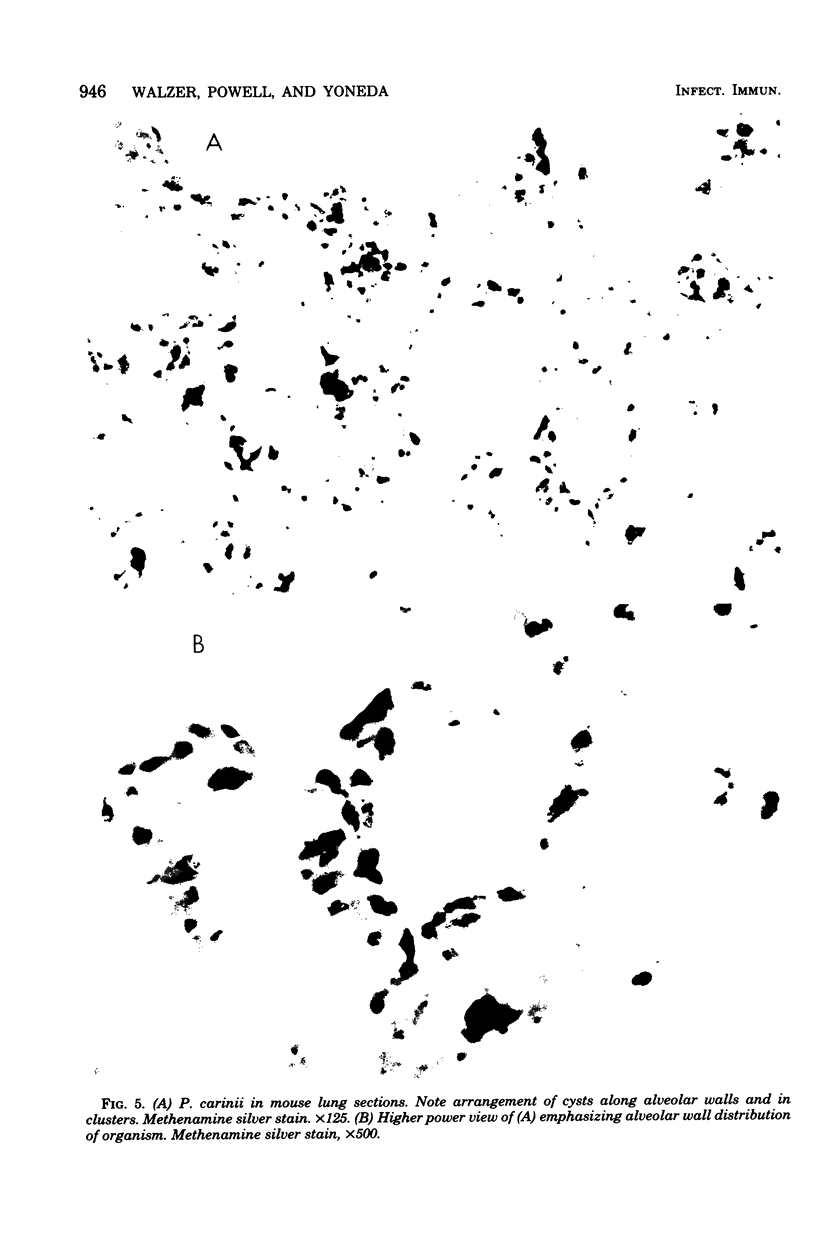
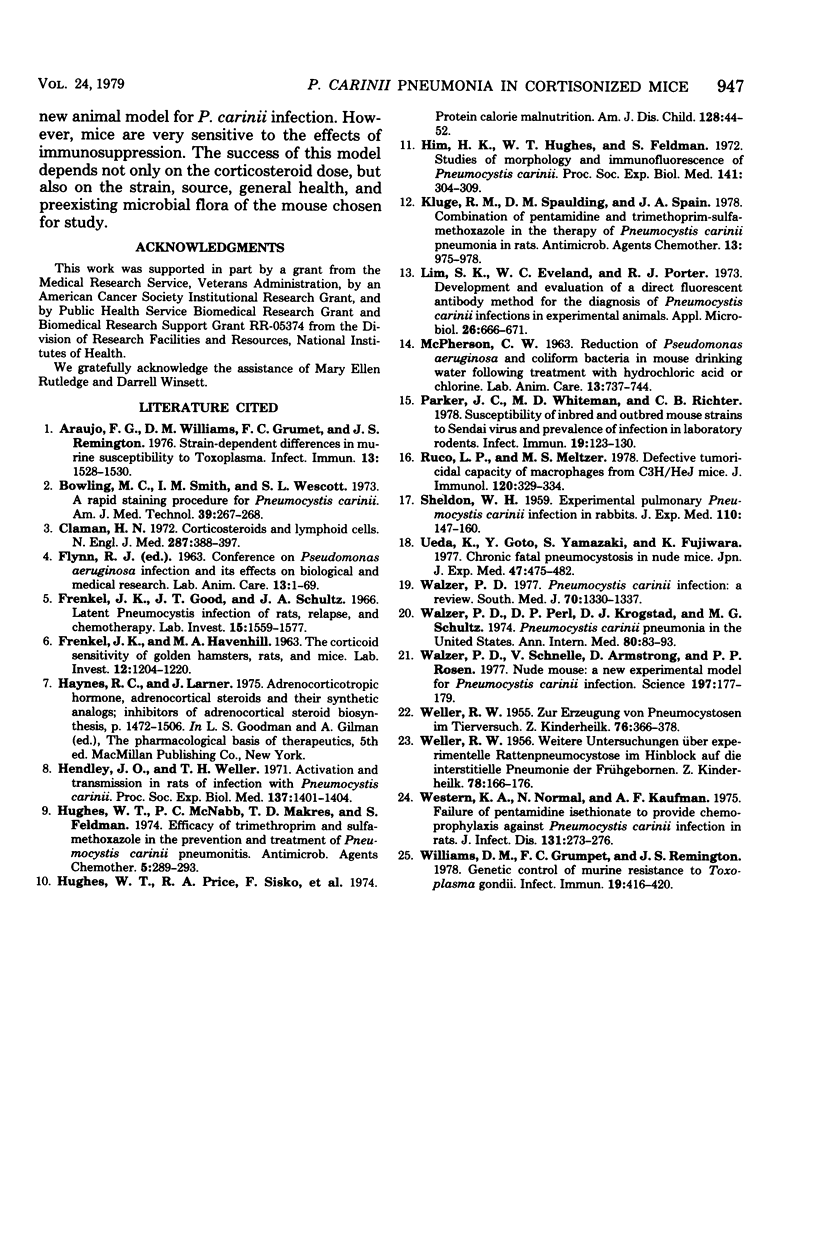
Images in this article
Selected References
These references are in PubMed. This may not be the complete list of references from this article.
- Araujo F. G., Williams D. M., Grumet F. C., Remington J. S. Strain-dependent differences in murine susceptibility to toxoplasma. Infect Immun. 1976 May;13(5):1528–1530. doi: 10.1128/iai.13.5.1528-1530.1976. [DOI] [PMC free article] [PubMed] [Google Scholar]
- Bowling M. C., Smith I. M., Wescott S. L. A rapid staining procedure for Pneumocystis carinii. Am J Med Technol. 1973 Jul;39(7):267–268. [PubMed] [Google Scholar]
- Claman H. N. Corticosteroids and lymphoid cells. N Engl J Med. 1972 Aug 24;287(8):388–397. doi: 10.1056/NEJM197208242870806. [DOI] [PubMed] [Google Scholar]
- FRENKEL J. K., HAVENHILL M. A. THE CORTICOID SENSITIVITY OF GOLDEN HAMSTERS, RATS, AND MICE. EFFECTS OF DOSE, TIME, AND ROUTE OF ADMINISTRATION. Lab Invest. 1963 Dec;12:1204–1220. [PubMed] [Google Scholar]
- Frenkel J. K., Good J. T., Shultz J. A. Latent Pneumocystis infection of rats, relapse, and chemotherapy. Lab Invest. 1966 Oct;15(10):1559–1577. [PubMed] [Google Scholar]
- Hendley J. O., Weller T. H. Activation and transmission in rats of infection with Pneumocystis. Proc Soc Exp Biol Med. 1971 Sep;137(4):1401–1404. doi: 10.3181/00379727-137-35798. [DOI] [PubMed] [Google Scholar]
- Hughes W. T., McNabb P. C., Makres T. D., Feldman S. Efficacy of trimethoprim and sulfamethoxazole in the prevention and treatment of Pneumocystis carinii pneumonitis. Antimicrob Agents Chemother. 1974 Mar;5(3):289–293. doi: 10.1128/aac.5.3.289. [DOI] [PMC free article] [PubMed] [Google Scholar]
- Hughes W. T., Price R. A., Sisko F., Havron W. S., Kafatos A. G., Schonland M., Smythe P. M. Protein-calorie malnutrition. A host determinant for Pneumocystis carinii infection. Am J Dis Child. 1974 Jul;128(1):44–52. doi: 10.1001/archpedi.1974.02110260046008. [DOI] [PubMed] [Google Scholar]
- Kim H. K., Hughes W. T., Feldman S. Studies of morphology and immunofluorescence of Pneumocystis carinii. Proc Soc Exp Biol Med. 1972 Oct;141(1):304–309. doi: 10.3181/00379727-141-36764. [DOI] [PubMed] [Google Scholar]
- Kluge R. M., Spaulding D. M., Spain A. J. Combination of pentamidine and trimethoprim-sulfamethoxazole in therapy of Pneumocystis carinii pneumonia in rats. Antimicrob Agents Chemother. 1978 Jun;13(6):975–978. doi: 10.1128/aac.13.6.975. [DOI] [PMC free article] [PubMed] [Google Scholar]
- Lim S. K., Eveland W. C., Porter R. J. Development and evaluation of a direct fluorescent antibody method for the diagnosis of Pneumocystis carinii infections in experimental animals. Appl Microbiol. 1973 Nov;26(5):666–671. doi: 10.1128/am.26.5.666-671.1973. [DOI] [PMC free article] [PubMed] [Google Scholar]
- MCPHERSON C. W. REDUCTION OF PSEUDOMONAS AERUGINOSA AND COLIFORM BACTERIA IN MOUSE DRINKING WATER FOLLOWING TREATMENT WITH HYDROCHLORIC ACID OR CHLORINE. Lab Anim Care. 1963 Oct;13:737–744. [PubMed] [Google Scholar]
- Parker J. C., Whiteman M. D., Richter C. B. Susceptibility of inbred and outbred mouse strains to Sendai virus and prevalence of infection in laboratory rodents. Infect Immun. 1978 Jan;19(1):123–130. doi: 10.1128/iai.19.1.123-130.1978. [DOI] [PMC free article] [PubMed] [Google Scholar]
- Ruco L. P., Meltzer M. S. Defective tumoricidal capacity of macrophages from C3H/HeJ mice. J Immunol. 1978 Jan;120(1):329–334. [PubMed] [Google Scholar]
- SHELDON W. H. Experimental pulmonary Pneumocystis carinii infection in rabbits. J Exp Med. 1959 Jul 1;110(1):147–160. doi: 10.1084/jem.110.1.147. [DOI] [PMC free article] [PubMed] [Google Scholar]
- Ueda K., Goto Y., Yamazaki S., Fujiwara K. Chronic fatal pneumocystosis in nude mice. Jpn J Exp Med. 1977 Dec;47(6):475–482. [PubMed] [Google Scholar]
- WELLER R. Weitere Untersuchungen über experimentelle Rattenpneumocytose im Hinblick auf die interstitielle Pneumonie der Frühgeborenen. Z Kinderheilkd. 1956;78(2):166–176. [PubMed] [Google Scholar]
- WELLER R. Zur Erzeugung von Pneumocystosen im Tierversuch. Z Kinderheilkd. 1955;76(4):366–378. [PubMed] [Google Scholar]
- Walzer P. D., Perl D. P., Krogstad D. J., Rawson P. G., Schultz M. G. Pneumocystis carinii pneumonia in the United States. Epidemiologic, diagnostic, and clinical features. Ann Intern Med. 1974 Jan;80(1):83–93. doi: 10.7326/0003-4819-80-1-83. [DOI] [PubMed] [Google Scholar]
- Walzer P. D. Pneumocystis carinii infection. South Med J. 1977 Nov;70(11):1330–1337. doi: 10.1097/00007611-197711000-00027. [DOI] [PubMed] [Google Scholar]
- Walzer P. D., Schnelle V., Armstrong D., Rosen P. P. Nude mouse: a new experimental model for Pneumocystis carinii infection. Science. 1977 Jul 8;197(4299):177–179. doi: 10.1126/science.301657. [DOI] [PubMed] [Google Scholar]
- Western K. A., Norman L., Kaufmann A. G. Failure of pentamidine isethionate to provide chemoprophylaxis against Pneumocytis carinii infection in rats. J Infect Dis. 1975 Mar;131(3):273–276. doi: 10.1093/infdis/131.3.273. [DOI] [PubMed] [Google Scholar]
- Williams D. M., Grumet F. C., Remington J. S. Genetic control of murine resistance to Toxoplasma gondii. Infect Immun. 1978 Feb;19(2):416–420. doi: 10.1128/iai.19.2.416-420.1978. [DOI] [PMC free article] [PubMed] [Google Scholar]



